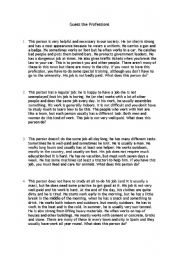
|
Professions/Jobs -- Riddles
These are lengthy descriptions of four professions to be read aloud in class for pronunciation practice and for comprehension. Students must discover which occupation each riddle describes. As a follow-up, I have students write their own description of different professions.
Level: intermediate
Age: 11-17
Type: reading
Downloads: 26
|
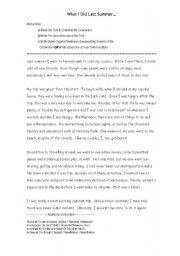
|
Connector Text
This is a description of a summer holiday written in the first person. It is to serve as an example of an essay with special emphasis on the use of conjunctions to make the writing more interesting. There are a great many conjunctions to be identified, explained and consequently used by the students. The second page is a question follow-up to be ...
Level: intermediate
Age: 14-17
Type: Choose
Downloads: 21
|
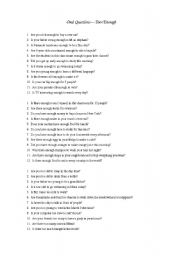
|
Oral Questions to Practice Too & Enough, page 1
This consists of three sets of 12 oral questions in order for students to get used to hearing too and enough used correctly before they have to write their own translations or fill in the blanks.
Level: intermediate
Age: 12-17
Type: others
Downloads: 14
|

|
Too & Enough, Oral Questions2
More oral questions to practice too and enough: 37 here, with some elaboration. Extra questions can be improvised along the way to enhance classroom conversation.
Level: intermediate
Age: 12-17
Type: others
Downloads: 7
|
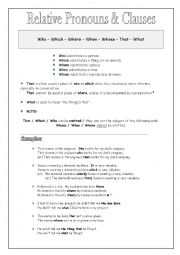
|
Relative Pronouns & Clauses Explained (Defining)
This is a guide to understanding how the relative pronouns are used in defining relative clauses. It is intended to be a simple explanation with examples before doing practice.
Level: intermediate
Age: 14-17
Type: grammar-guide
Downloads: 64
|
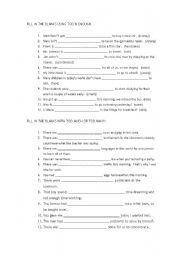
|
Too & Enough, Too much & Too many Fill in the Blanks
This worksheet has two sections. The first one is to fill in with too and enough and the second one is to complete with too much and too many. Not too difficult before moving on to more complicated worksheets. Answer key provided.
Level: intermediate
Age: 12-17
Type: worksheet
Downloads: 25
|
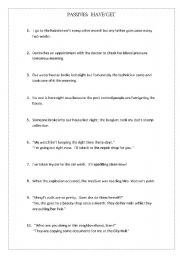
|
Passive Structure with Have/Get
This is for older students to practice the special passive structure using Have/Get, used mostly to communicate when something is professionally done for a person. Ten sentences/situations are given and must be rephrased using the required structure. Answer Key included.
Level: advanced
Age: 13-17
Type: worksheet
Downloads: 15
|
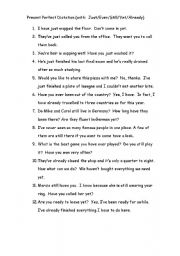
|
Dictation, Present Perfect Emphasized
Twelve sentences (or pairs of sentences) to be dictated to students to reinforce the use of the present perfect with some of its accompanying terms: just, ever, still, yet and already. Have the students correct their own sentences in English (one person can go to the board).
Level: intermediate
Age: 13-17
Type: Choose
Downloads: 4
|
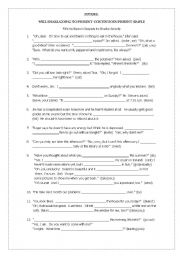
|
Future Fill-in
These situations are slightly more difficult than the other fill-in worksheet I�ve submitted on the future. Students must fill in the blanks with the correct form of the verb, be it using Shall, Will, To Be Going to, Present Simple or Present Continuous.
Level: intermediate
Age: 14-17
Type: worksheet
Downloads: 24
|
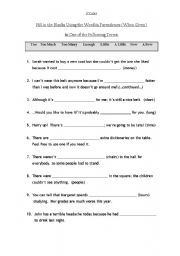
|
Too, Enough, Few, Little EXAM
This is a fill-in exam (students will have practiced with other exercises prior to taking it) using too, enough, little, a little, few, a few, too many and too much in ten sentences. The answer key is included on the second page.
Level: intermediate
Age: 14-17
Type: worksheet
Downloads: 14
|